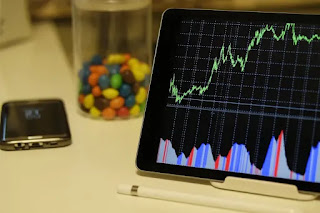If you've ever Googled “What is options trading?” and clicked away because it felt like reading quantum physics — I’ve been there.
I used to think “options” were for hedge fund people and Reddit bros yelling about $GME.
Then one day, I saw a tweet that said:
“You can make money even when a stock goes down with options.”
My broke, curious brain lit up.
Wait, what?
Stocks only make you money when they go up, right?
So… what the hell is this wizardry?
I dove in. Read the forums. Tried the apps.
And yes — I made a few bucks. Then lost a lot more.
But more importantly, I finally understood what options trading actually is.
Let me break it down in plain English — no jargon, no gatekeeping, just the stuff you wish someone had told you first.
💡 What Is Options Trading — Without the Wall Street Gobbledygook?
Options are like bets on a stock’s future price, but with superpowers:
-
You can make money if it goes up (calls)
-
You can make money if it goes down (puts)
-
You can lose money really fast if you're wrong 😬
But the key difference?
You’re not buying the stock itself. You’re buying the option to buy or sell it later — at a set price, by a set date.
It’s like reserving concert tickets:
You pay $10 now for the option to buy Beyoncé tickets at $200 next month.
If the real price goes to $500, you just made a sweet deal.
If the tour gets canceled or prices drop? You lose the $10. That’s it.
That’s options in a nutshell.
🧠 The Two Basic Types You Need to Know
| Option Type | What You Think Will Happen | What You Can Do |
|---|---|---|
| Call Option | You think the stock will go up | Buy the stock at a lower price |
| Put Option | You think the stock will go down | Sell the stock at a higher price |
🤑 Real Example (No Theory, Just Vibes)
Let’s say Apple stock is at $180 today.
You buy a call option that says:
“I want the option to buy Apple at $190 anytime in the next 30 days.”
You pay $2 per share for that option. (So $200 total for a 100-share contract.)
-
If Apple hits $210, your option is worth $20 per share.
Boom — you made $2,000 minus your cost. -
If Apple stays below $190?
Your option expires worthless.
You lose the $200 you paid. That’s the risk.
You didn’t buy Apple stock. You just paid for the chance to buy it if it popped off.
📉 The Downside I Learned Too Late
Options have expiration dates. If your prediction is right too late, you still lose.
And they’re leveraged, meaning small price changes = big swings in profit/loss.
I once turned $150 into $900 in 3 hours.
Next week, I lost $400 in 10 minutes.
Welcome to the rollercoaster.
🚫 Things They Don’t Tell You on Trading Apps
-
That $0.50 option that looks cheap?
It’s cheap because it’s unlikely to work. -
That call that’s “in the money”?
It comes with lower risk but lower reward. -
You don’t need to “exercise” the option.
You can just sell it and take the profit. -
You can trade options safely — but you need a strategy.
✅ How I Finally Made Options Trading Make Sense
-
I stopped chasing 10x bets
-
I started with defined-risk strategies (buying, not selling naked options)
-
I used Robinhood and Tastytrade simulators to test first
-
I treated options like insurance — not lottery tickets
And I kept a rule:
Only trade what you’re willing to completely lose — like blackjack money.
🧠 TL;DR: What You Actually Need to Know About Options
-
Options = bets on a stock's future price
-
Calls = make money if it goes up
-
Puts = make money if it goes down
-
You don’t own the stock — just the right to buy/sell it
-
You can trade options safely, but it’s easy to screw up
-
Start slow, learn the lingo, and track every trade
🔥 Final Thought
I didn’t come from a finance background.
I wasn’t born with Bloomberg on in the background.
I just wanted to grow my money — and maybe stop feeling like the stock market was a rich-people-only club.
Options trading gave me a taste of that power…
But also taught me to respect the risk.
Now, I don’t trade every day.
But I do understand what I’m doing.
And that alone is worth more than any single win.





No comments:
Post a Comment